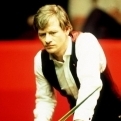
-
Content Count
371 -
Donations
$25.00 -
Joined
-
Last visited
Community Reputation
128 ExcellentAbout MarkJHarris
-
Rank
Mr
- Birthday 04/21/1969
Profile Information
-
Gender
Male
-
Location
Isle of Man
-
Interests
Flying! Cycling and walking
B737NG and SEP current. Q400. BAe146 and BAeATP and Cessna Flying Instructor in the dim and distant past. on perma-furlough!!
Flight Sim Profile
-
Commercial Member
No
-
Online Flight Organization Membership
VATSIM
-
Virtual Airlines
No
About Me
-
About Me
Airline Pilot marooned from his family most of the week.
Recent Profile Visitors
3,311 profile views
-
Do you not get the -700 with the -600? IMHO the -700 was the best one to fly. I used to work for a company with a couple of -700s and they were far nicer to fly. We had one with and one without winglets. Basically, you tend to use Flap 1 for takeoffs in the 6/700 and F5 for the -8/900 to avoid tail scrape issues. The 6/700 has the air conditioning system from the 300, with one recirc fan and just two cabin temp controls. The -8/900 uses the -400 system with two recirc fans and three zones. both packs control to the lowest temp selected and the trim air alters the other zones to fit the selection. Only other changes are the engines are programmed for 18/20/22k thrust ratings on the 6/700 and 22/24/26 (27) on the larger aircraft. Climb N1 is the same so the little ones go up like rockets!
-
Lovely set of videos Rudy. Well done. I must admit I often in the Deep Winter set myself up in P3Dd in a light aircraft with OBS and RMI and use the slew function to move "somewhere" in the UK. I set weather to an overcast so i can't "see" anything, proper IFR and properly lose myself. Then start tuning aids till I can get a location, then steer towards and airport and let down with appropriate basic aids to a Non Precision approach. Really scrambles the grey matter and prepares me for the SIM when I go back to work.....
-
Mark, I think it's really about expectations and understanding of what the software and hardware are trying to achieve. For me the main benefit of the Brunner CLS-E pedals and Yoke are nothing to do with them moving, nor wobbling about in gusts and turbulence. The aircraft I fly don't give any movement of the controls in these conditions anyway as I'm operating cables to hydraulic servos in the 737. The real benefit is TRIM. You can trim the loads out, just like a real aircraft. (well except Airbus...) Making the Brunner behave like different types of control, is good also. My 737 does not trim like a C172, so neither should the yoke. Flying a real aircraft is about accuracy and trim, hand flying is a joy once it's in trim, a word not allowed when it's not. No other yoke replicates this correctly.
-
It's an age old problem and hand tracking must be a right pain to get right, because a lot of companies have been trying for many years and still it eludes them. One of the problems is the controls in an airliner are quite a distance from you. Remember though, you rarely touch most of them. I doubt many of us would want to put themselves into a PDMG airliner and play the PM role. So in that case use FS2Crew! If I'm flying, I'll never touch the gear lever or the flap lever! I only touch the thrust levers taxiing out and in, and for the first few seconds, and last minute of flight. For physical controls really, what I need are the electric pitch trimmer on the yoke, and most importantly, a rotary sprung rudder trimmer hald on the right of my rig spaced correctly. Some of our 737s have a weird lower electric panel layout, and the trim unit is mounted forward of the rear position that is standard. It's a real bind reaching for it and finding it somewhere else!!!!! It's a muscle memory thing I guess, I would pay a small fortune to get that tactile trim knob for my sim! Different aircraft need particular controls and they need to sit in the correct position and move correctly to feel "right". Most do not and in reality you hardly ever use them, the other guy does! For 2 crew aircraft, FS2Crew is the answer.
-
Back when I had a working rig and Xplane I imported a window with the data on it. I could use my work EFB and import the screen directly into Xplane. I think there are app s to do that in MS2020 as well, not sure. If it's an airliner you fly, then FS2Crew is the best thing you can have. Just ask the FO to do it. (Flap Operator). They'll read checklists and do all the sundry stuff for you. The more realistic you make it, the more boring it will be....which is why I never fly tubes in simulators, except for the big 6 axis one I have to go in every 6 months to keep my job!
-

Varjo new product launch
MarkJHarris replied to Overload's topic in Virtual Reality (VR) Hardware and Games
Hopefully it moves the goalposts and others will respond! Still too expensive for me.😟 -
I have the CLS-E Mk2. I also have the CLS-E pedals. They're mounted in my rig, but I'm just about to start a lot of machining work to build up my new rig and hope to have it working this Winter then I'll play. Motion Rig and with control loaded controls it needs to be stiff, something the DofReality Motion Rig upper part unfortunately isn't.
-
Most autopilots use a servo in the control cables to the elevator and ailerons. NOT TRIM! The autopilot then resolves constant load on the servo with an electrical trim command. It is absolutely usual for a manual trim command to disengage the autopilot. A bit annoying catching it by accident while answering the radio and having lunch on your lap.... ahem!
-
You are right. The Rudder pedals are connected to the Rudder on the fin, so pushing the left pedal will swing the rudder left. This pushed the tail and will present the side of the fuselage to the airflow, causing a side force which is the part of the yaw you feel. On a motion sim, you'd be rolled away from the turn to simulate it. Your aim in flight is to keep the ball under the horizon in the centre, yaw is bad. The only exceptions are to line up on landing in crosswind, or if you want to sideslip to lose altitude. Which is fun in a light aircraft. You can learn a bit more about secondary effects which will help too. On straight wings it's not too bad, but swept wing aircraft have a noticeable secondary roll with yaw. As to your twist axis. Probably useful to use it for the tiller but ideally if you are flying a light aircraft then a proper yoke would be next on your lest. Whatever you do, enjoy it!
-
Just onto this thread. So on my works toy, we have a double electric motor on a jack screw that moves out horizontal stabiliser. the elevator will return to neutral when in trim. So our yokes sit central. The bottom of hte jack screw has a drum with cables wrapped round. If the cables are locked stopping the drum from turning it locks up mechanically so the motors can't spin the jack screw. Those cables travel 100ft or so to a horizontal drum. The drum is rotated by two chains with sprung tensioners on them to a pair of wheels on the centre pedestal. These are mirror image alloy castings. With flick out handles. beware. these are evil devil tools designed to rip your knees off your leg! The chain tensioners are what give the clattering sound when trimming. Those big trim wheels can go years without ever being touched..... so in reality, anyone flying the PDMG 737NG really doesn't need a physical trim wheel. They're bloody vicious!
-
Here's an interesting snippet. On a 737, (my workplace) the Carbon brakes mean that detent 2 reverse or idle reverse produce the same stopping distance with Autobrake 2 or 3. Seeing as these are retardation rates, that makes sense. Carbon brakes wear per application, not force or length of application. A proper head messing concept. Anyway, as a result, reverse just makes noise and wastes fuel. Still need reverse idle though. It's actually a fiddly pain on real aircraft too, at least pre-historic old dinosaurs like the 737....
-
Funnily enough, that's not far off the SOP for real airliners. On the 737, we use 40% to stabilise, the CFM56-7B and BE are quite random for spool up below this. I usually lift the outside engine to 40% when turning onto the runway first to help turn, then the other one to help straighten out and then hand over control or press the TOGA switch. Once stabilised they come up to the power quickly and symmetrically. Asymmetric power in a take off can end very badly indeed. Definite No Tea and No biscuits kind of way....
-
Now now everyone. Calm down. I should change me signature as I'm back to work at present, hence being away from here over a week. 5 crappy earlies including a Tenerife the other day into the usual windshear. An interesting point off topic but informative if you fly the PMDG 737NG, Calm winds, too cloudy to see the Volcano, but we input the lat and long of the top corner of the ash cloud and made a fix of it on the ND. For PMDG users, go on the CDU, INIT REF> INDEX>NAV DATA> then top left make up something for a waypoint, it will then offer you the lat and long boxes. In our case N2920.0 W01649.0 and accept. Then on the fix page add that made up point and it will appear. On the lines below add a radial and / after and it will show dotted green lines extending from the fix. You can then put the two sides of the Ash cloud warning box on the screen to see if you're going too near it. We passed 15,000ft over the top of the corner so no problem. Calm winds till 100ft then a 25kt headwind was fun though. I digress. The 737 has a firmish control and trims back to more or less the central position. It firms up at speed and under positive G loading using the two small pitot on the tail fin driving through the Pitch and Feel Computer. The CLS Brunner software mimics this feel when setup correctly. In essence you run the Brunner software in the background and that determines how the yoke responds to the Microsoft ESP output figures. The underlying simulator code is more than just for a home simulator anyway. Natively, it will drive the Sidewinder joystick from Windows and the Simulator code but converting the signals that drove that into what you need is via the plugin and Brunner CLS software. I will be starting to machine the parts in the coming weeks to begin building my rig. I'm working on and off this Winter as the pay reduction has bitten a bit and I can't afford my usual full Winter off this year. Play kindly folks. You can have plenty of fun with just a Saitek yoke and the new Thrustmaster one looks interesting as well.
-
OK. I actually have the Brunner controls. So, let's get down to basics. These are not Force Feedback units. They are Control Loading devices. Which means they function like the ones in real full flight simulators. And also why they are very expensive. Both motion and resistance to movement is controlled. No springs, just motors inside. The Software is used to determine "feel" so that the yoke will behave like a Cessa or Boeing 737, or whatever you programme into it. It moves when on Autopilot, will vibrate or move under air load, etc. In Cessna mode, it falls forward and comes back with air load as you move down the runway, stiffens as you speed up and trims to a neutral feel in position, whereas in 737 mode it sits central, stiffens with speed and will return to central with neutral trim. The pedals again, kick over runway lights, and will sit offset with trim applied. Perfect for twins, etc. I've only played a bit with mine, I'm still building the motion platform to mount them firmly, as the supplied platform was too flexy. Not got much time over Summer as back at work flying 90+ hour months (on 70% pay but that's another matter)..... They are the Rolls Royce of yokes, no question. As to the Joystick, that also is control loaded, they do one with an Airbus stick, which I find a bit confusing, because the one thing an Airbus sidestick doesn't do is give you any feedback!
-
According to Musk on Twitter SN16 MAY fly for a sub orbital test flight. SN20 is scheduled for the demo Orbital flight with BN3 soon. Both parts are expected to soft land on the ocean, Gulf or Atlantic for BN3 and Pacific of the Coast of Hawaii for SN20. The Booster and Starship may well be ready before the launch facilities. They have plenty of history of soft landing Falcons and fairing halves so recovery and desalination is well known to SpaceX.





